Many writers would define magic as the desire to use invisible and unknowable forces to change our own visible world, Occult Art aims to reconcile a connection between these two things and give the unknowable a form.
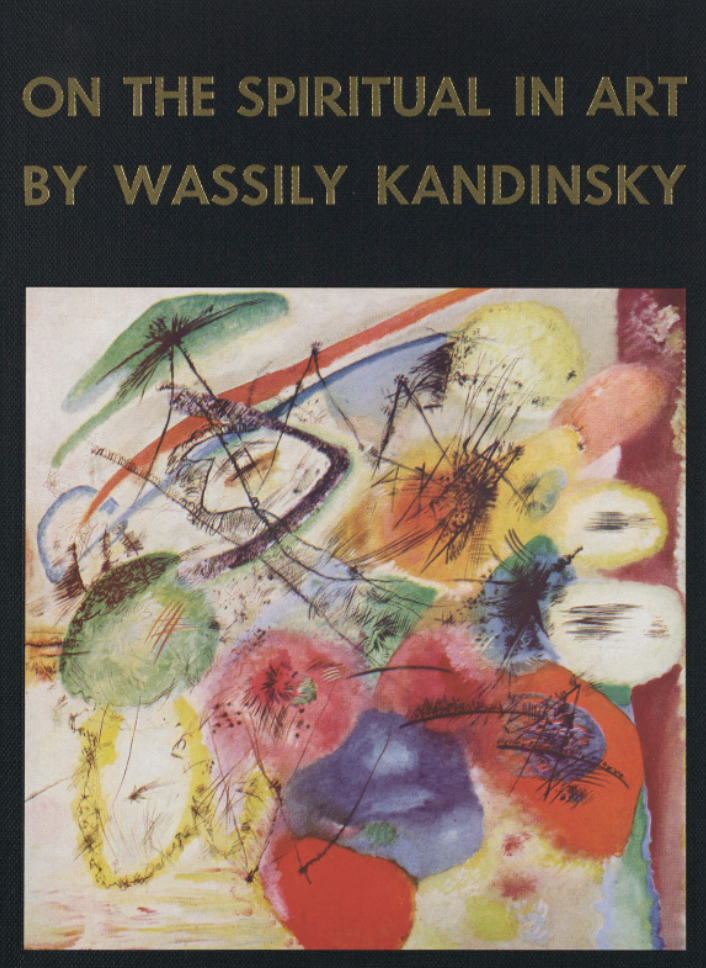
Wassily Kandinksy published the book On the Spiritual in Art, in 1912. He like many of the modernist painters of his time, including Piet Mondrian, Kazimer Malevic and Frantisek Kupka were inspired and influenced by Theosophy which is an anti consumerist esoteric spiritual movement. In the book, Kandinsky argues against the practise of making ‘art for arts sake.’ Artists should endeavour to make art that conveys a deeper meaning. Kandinsky saw art as a way that one could transcend this mortal realm and attempt to reach directly into the higher dimensions. According to the Art Historian, Julia Voss, Kandinsky, told anyone and everyone that would listen that he was the first abstract artist, he constantly bragged about it, saying ‘Hey you know, I was the first! I painted the first abstract painting in 1911!’ Kandinsky was good (and don’t get me wrong I love Kandinsky), but he wasn’t the first modern Abstract Artist… The first was actually a woman named Hilma Af Klint, however she stated in her will that she didn’t want her paintings shown to anyone until at least twenty-five years after her death…
Hilma Af Klint
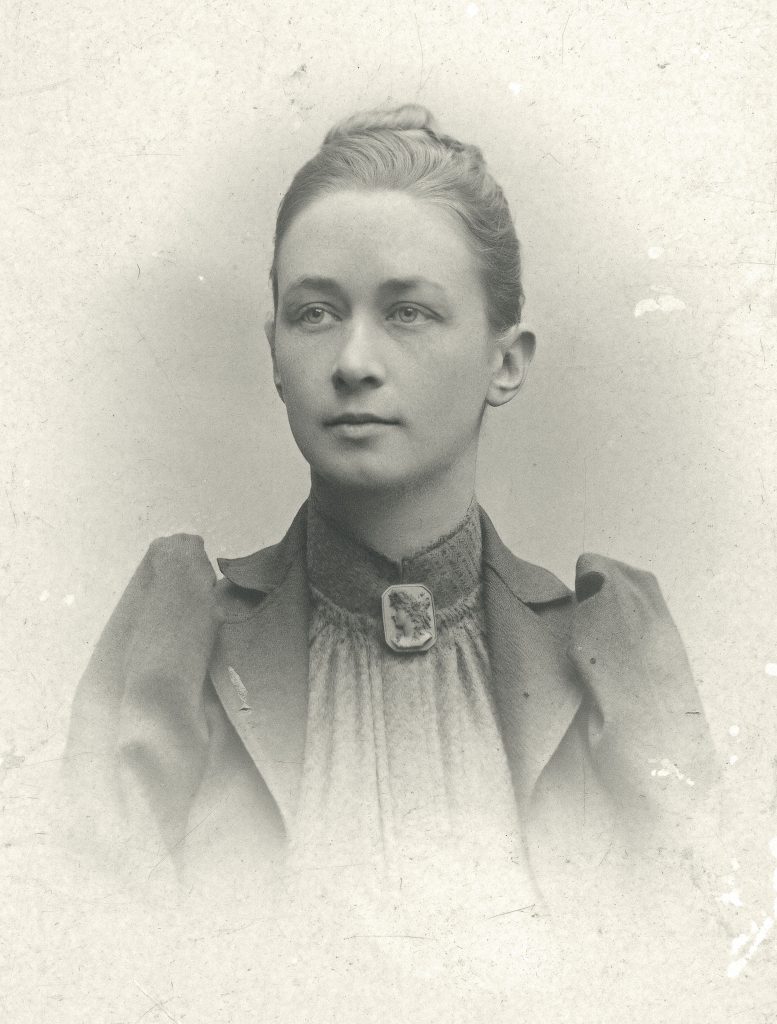
Hilma af Klint was born in Sweden in 1862 to a wealthy family and attended the Royal Academy of Art in Stockholm. Although Hilma had participated in seances before, it was the death of her little sister, Hermina in 1880, that led to her turning to religion and spirituality for comfort. She also became interested in the occult and spirituality and like Kadinsky she found an interest in Theosophy. Hilma joined a group with four other women, they called themselves “The Five.” The women met up regularly to hold spiritual meetings and seances where they would call upon the, ‘high masters.’ They prayed together weekly, meditated, and held seances to commune with spiritual guides. In notebooks these women would frantically scribble down cryptic messages from the high masters. They would also practice, automatic writing and drawing. This is when you write and draw but without consciously guiding the movement of the pen on the paper. Hilma wouldn’t start her life’s work until 1804 when she was 42 years old. One of the high masters was called Amaliel. One day during a séance Amaliel commissioned, the Five to make her a temple filled with art work. However, all of the women bar Hilma, turned down the job, worried that sustaining such an intense collaboration with the spirits would send them mad.
In 1906 Hilma began painting, ‘mediumistically.’ Mediumistic Art is a psychic phenomenon where Artists create under the guidance of a higher power. Hilma works on the collection “Paintings for the Temple.” The first group of paintings Hilma produces as part of this project are called ‘Primordial Chaos” and consist of twenty-six fairly small pictures. She keeps this work secret, painting on the sly and only sharing with a few very close friends. Interestingly, Klints practice which has been described for its time as, ‘radically abstract’, predates the work of Wassily Kandinksky, Piet Mondrian and other Artists who are widely considered the trailblazers of modernist Abstract Art.
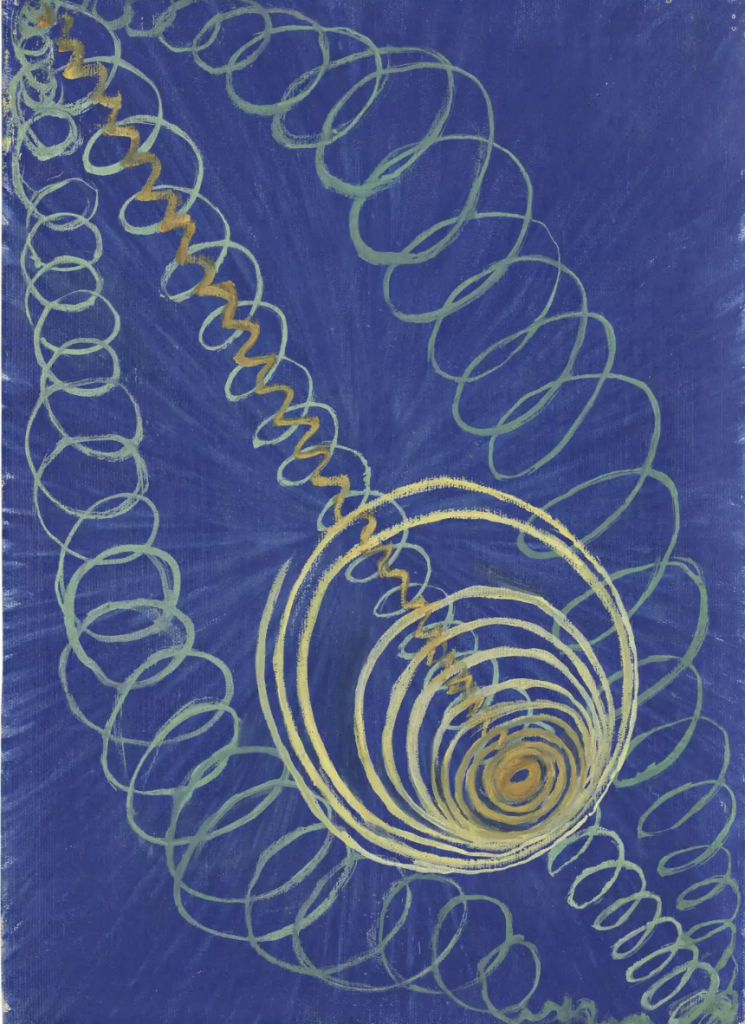
The first painting Hilma painted whilst in a meditative state was Ur Chaos (1906) she claimed to have channeled Amaliel who drew the biomorphic shape by guiding her mediumistically as she meditated. Hilma didn’t do any initial drawings and claimed to have no idea what she was painting or what the paintings were supposed to depict, she didn’t know what the meaning of the paintings were whilst painting them but believed that hidden within them were messages that needed to be preserved for future generations. She said in 1907, ‘The pictures were painted directly through me, […] I worked swiftly and surely without changing a single brushstroke.’ Amongst Hilma af Klints things were many notebooks filled to the brim with messages from the high masters attempting to explain the meaning behind the symbols she painted.
In 1908, Hilda met Rudolf Steiner, he was an Austrian philosopher, Artist and playwright who founded the Anthroposophical Society. Anthroposophy is another esoteric spiritual movement, it‘s very similar to Theosophy, however Anthroposophy incorporates more Christian elements. Hilma met Steiner when he was lecturing in Stockholm, she really admired his writing and was excited to show him her paintings. However, when she showed him her abstract paintings, he complained that he couldn’t decipher their meanings. This is unsurprising, he was notoriously critical about mediumistic painting, accusing it of being ’atavistic’ and ‘passive.’ It was Steiner who advised her to not show her paintings for at least fifty years because he believed that, ’men and women had not reached the same point in their development’ and that the ‘contemporary world could not possibly understand her Art.’ Perhaps Steiner’s criticism got to Hilma because that same year she took a break from painting to care for her dying mother and when she got back to it, four years later in 1912, she no longer described her process as an external spirit acting through her but instead said that she was receiving messages from the spirits and interpreting those messages into Art, this gave her more control over her process and was likely in response to Steiner’s comments about the passivity of mediumistic art.
Steiner was unnecessarily discouraging to Hilma, the next time they met in 1920, she asked him if she could exhibit her paintings at the Goetheanum (the World Center for the Anthroposophical movement in Switzlerand.) We have no idea what Steiner said to her in response to this request, but her paintings were never exhibited. After this second meeting Hilma stopped painting for two years and then when she began again she only painted in the way that the Anthroposophical movement approved of by applying watercolours, ‘wet on wet.’ Hilma tried to exhibit her paintings within the anthroposophical movement, once in 1922 and again in 1937 and both times she was rejected. This is potentially why she never attempted to exhibit her abstract paintings again within her lifetime, apparently she decided herself that the world wasn’t ready to see her art, but she clearly didn’t truly believe that, or she wouldn’t have asked Steiner to exhibit them, not once but three times. It wasn’t until 1986 that her work would finally be exhibited for the world to enjoy.
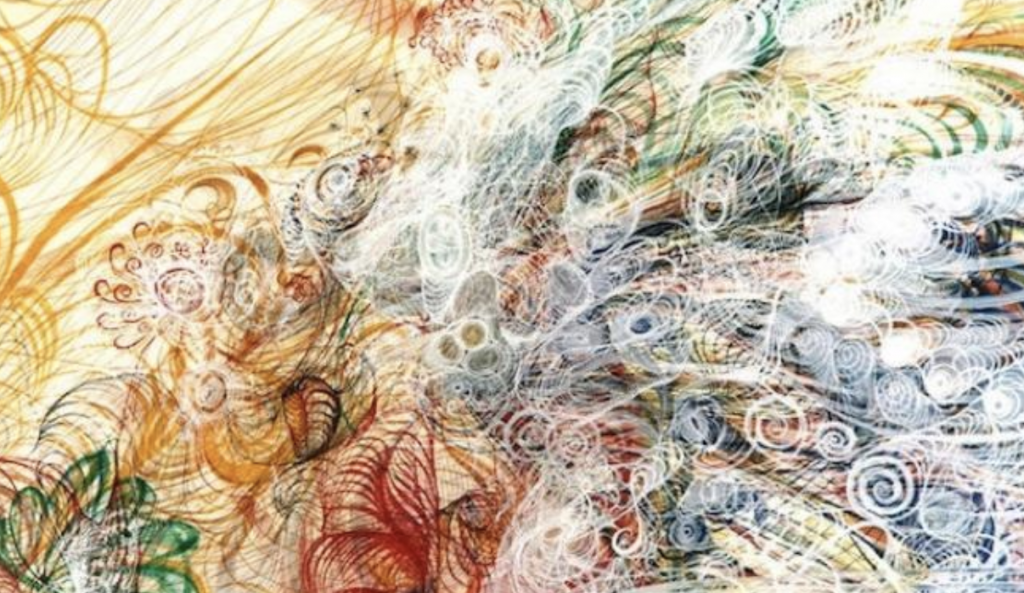
Prior to Hilma there was Georgiana Houghton, like af Klint, Houghton also painted mediumistically, channeling the spirits, she painted waters colours in the 19th century and she has abstract works that can be closely connected to twentieth- century abstract Artists. On the back of each painting Houghton wrote that her, ’hand was guided by various spirits, including family members, several Renaissance artists, such as Titian and Correggio and higher angelic beings.’ Although highly accomplished, it has taken over 150 years for her work to be appreciated, when she initially put on a show of her work in 1871, it only served to bankrupt her. However, like Hilma, Houghtons paintings are now finally beginning to be appreciated. Perhaps these women really were producing paintings for the future.
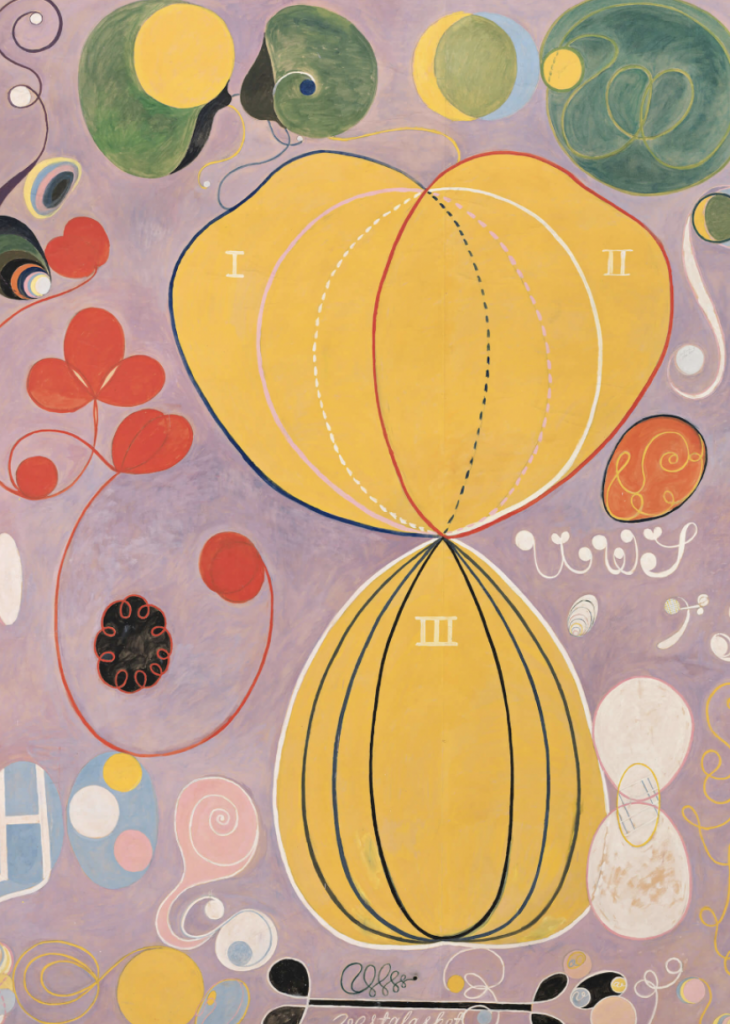
Within Anthroposophy, Steiner taught lectures on, ‘‘Johann Wolfgang von Goetheos color theory’, which Af Klint was very much influenced by. Part of the theory is the idea that, ‘certain colours can imbue spiritual significance when applied correctly to architecture or art.’ This is because according to Geotheos theory, colour is a way we can feel the, ‘spiritual within the physical.’ Kandinksy also ascribed to Goetheo’s colour theory, it’s been theorised that Kandinsky likely had synesthesia, this is, ‘the substitution or coincidence of one sense with another, as in the phenomenon of “hearing colors” or “seeing sounds.” Part of Steiner‘s teachings on colour theory were that, ‘synesthesia is one of the signs of advance on the spiritual path.’ The use of colour and symbolism within af Klints paintings means there are so many layers of meaning. Within af Klint’s paintings, snails are representative of evolution and growth, the duality of contrasting blues against yellows is supposed to represent the male and the female or femininity and masculinity and there are so many complexities when attempting to decipher and decode the hidden meanings within her paintings.
So that’s Hilda af Klint, the woman who pipped Kandinsky to the post and painted the first modern abstract painting. Hilda’s paintings have time travelled. She’s sent us psychedelic messages from the past, hidden within paintings we have to un code in the present. Isn’t that the ultimate in magic?






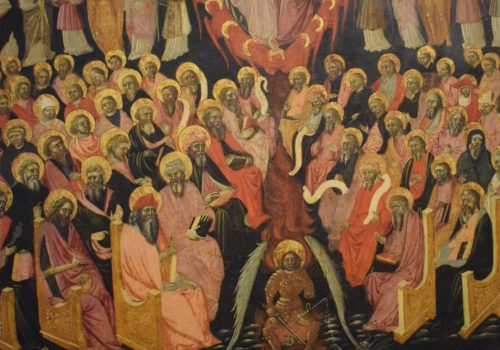
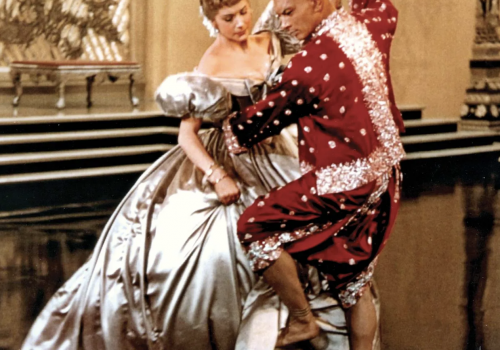
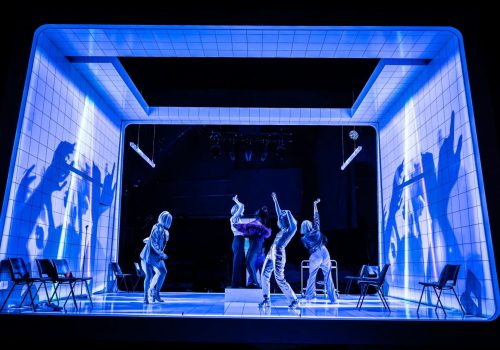

Leave a Reply